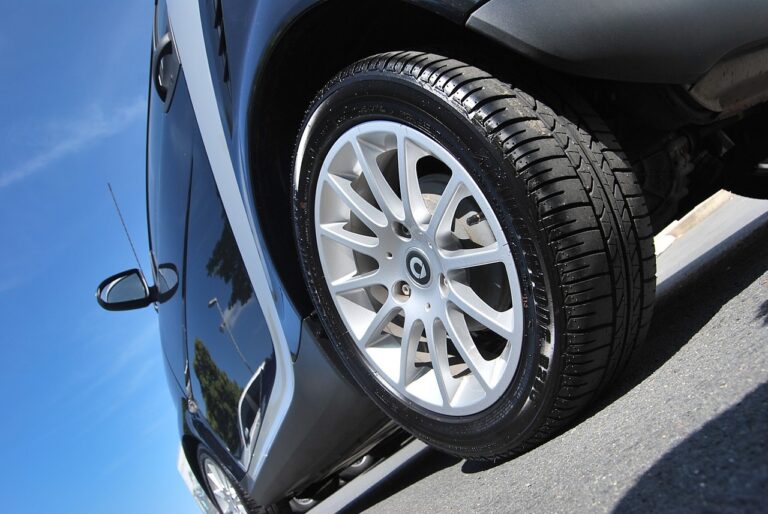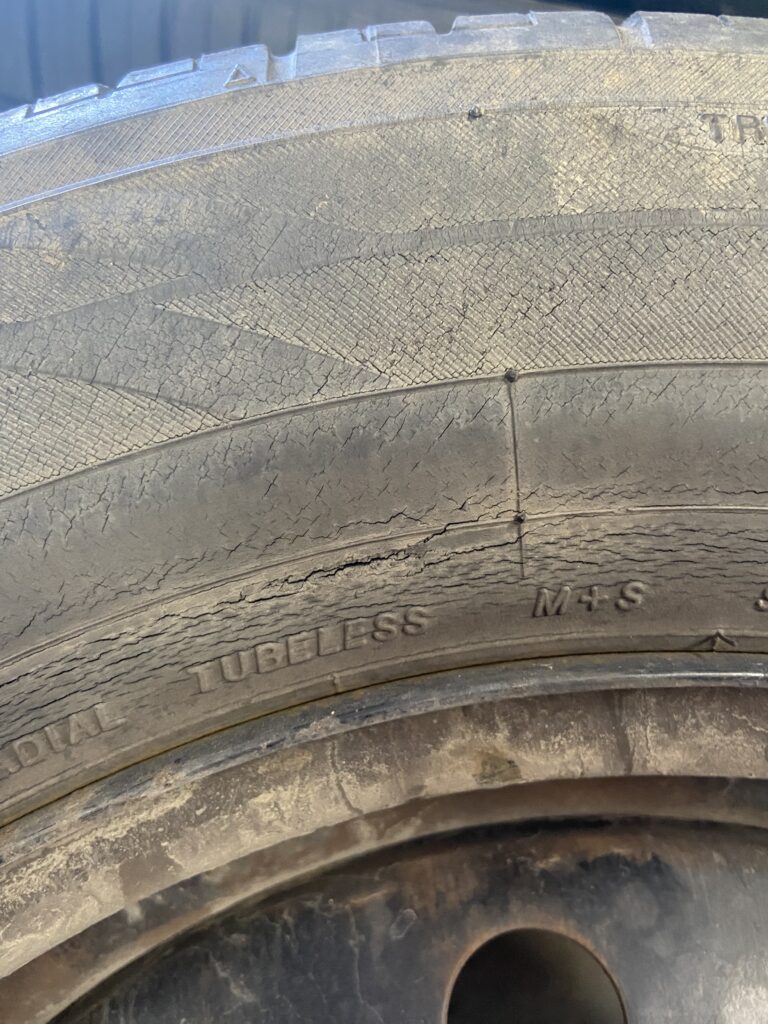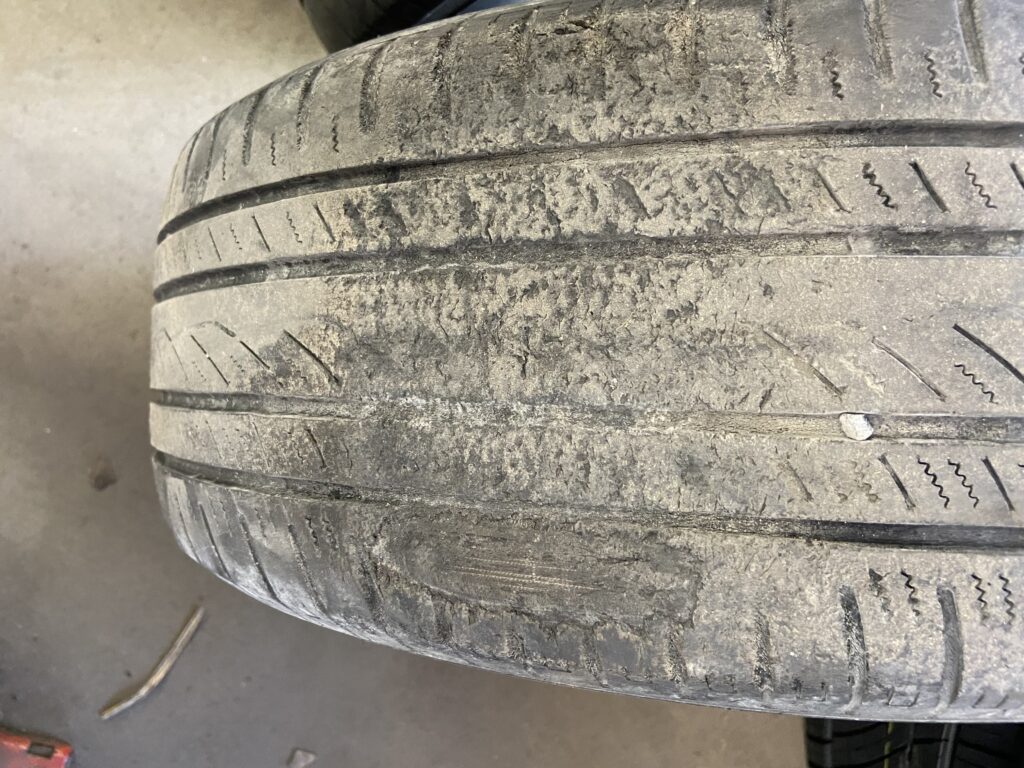What Tire Dry Rot Looks Like
Identify, Prevent and Stay Safe
A vehicle has many critically important parts: it can’t run without a working engine; it can’t transfer the engine’s power without a working transmission and the vehicle won’t even start up without a functioning starter. Although tires are an extremely important component, their condition is often one of the most overlooked.
We demand quite a lot from our tires and when we take care of them, they take care of us. Let’s talk about how to spot Tire Dry Rot, preventing future dry rot and how to stay safe in the worst case scenarios. If you notice any of these signs below, call our auto repair shop for a Tire Replacement as soon as possible, to be sure to stay safe on the road.
5 Signs to Spot Tire Dry Rot: Take a Closer look.
Tire decay, or Dry rot, is a natural occurrence that occurs due to age, exposure, chemicals and conditions. Dry rot in tires allows the air to escape causing serious driving hazards including: leaks, holes or blowouts. In extreme cases of tire neglect, the tread may separate from the tire entirely.
#1 – Cracks in the Sidewall
One of the first signs of tire dry rot usually occurs when the tires sidewalls begin to represent cracking leather. These hairline cracks may begin in an isolated area or extend the face of the tire. Although your tread may be road ready and without issues, the sidewall rot causes unsafe driving conditions.

#2 – Inflation Issues
You may notice your tire(s) aren’t holding air as usual. These tiny hairline cracks begin seeping air from your tires and will cause uneven balance issues, putting further pressure on all of your tires.
#3 – Faded Color
With dry rot, you may notice your tires fading in color. If you notice your tires beginning to grey, take a moment to inspect for cracking in your sidewalls. This fading happens due to the oils leeching out of the tires or being bleached by the sun or elements which also causes rot to occur.
#4 – Brittleness
Tire dry rot is just that, dry. Oil is an essential ingredient for synthetic rubber which comprises around 30% of a tires’ components. Dry rot dries out these oils, which causes the tires to become brittle, and you may even observe small pieces breaking away from the tire itself.
*Did you know – On average, to produce one tire, over seven gallons of oil must be used during the process?!*
#5 – Cracks on the Tread
This is one of the most advanced stages of tire dry rot. If you see your tire’s tread cracking or breaking away, do not attempt to drive this vehicle. Check all tires carefully; the date stamped on the tire is the week and year it was made. If the tires are all the same age, if one tire has this significant dry rot, they most likely are all unsafe to drive on. Stay safe and replace those tires before attempting to get behind the wheel.
Tire Dry Rot cannot be reversed, and it is not safe to drive on tires with dry rotting. Ensure your safety and the safety of your passengers if you see any of these signs and have your tires replaced right away.
#7 Ways to Prevent Tire Dry Rot
Dry Rot is a tire’s death sentence but there are ways to help prevent an untimely tire demise.
#1 – Avoid Harsh Chemicals Coming in Contact with Your Tires
Tires are made of a combination of synthetic and natural rubbers (as well as oil, carbon and other chemicals) and the rubber components are susceptible to damage from direct contact with everyday chemicals including: motor oil, solvents, gasoline, antifreeze and many chemicals commonly found in household garages (including pool treatments and industrial cleaning solutions). If your tires come in contact with any of these substances, it should be immediately washed with soap and water to prevent damage.

#2 – Extremely Low or High Temperatures
If your vehicle is not garage kept, here in Fauquier, Virginia the elements expose your tires to all seasons, including dry heat and below freezing temperatures. Consider covering your vehicle (or using tire covers) during the summer and winter seasons to extend the life of your tires and help prevent tire rot.
#3 – Avoid Excessive or Direct Sunlight
Direct sunlight exposes tires to harmful UV rays. When you have a chance to use a parking garage, choose a shady spot or park in a garage or under a carport, your tires will thank you.
#4 – Proper Maintenance and Inflation
Just as regular Oil and filter changes are important to the health of your engine, Tire Rotations and Alignments help your tires to wear at a more even pace, discouraging sidewall cracks developing in an isolated section of your tires. Proper Inflation (also completed during an Oil Change, Tire Rotation, or Alignment at Global Automotive) prevents excessive stress on the tread and sidewalls that can lead to cracking prematurely.
#5 - Do Not Overinflate or Overload your Vehicle
Just like underinflated tires, overinflated tires or overloaded vehicle loads will stress your tires and wear them down. When replacing your tires, always be sure they are the right tires based on your vehicle type and your expected use.
#6 – Wash your Car
Non-Petroleum based soap and water goes a long way to clean your tires of funguses, chemicals and salts from driving on the roads and helps you detect any anomalies early.
#7 – Take your vehicle for a Drive
Long periods of disuse can cause many issues, especially involving your wheels and brakes. Prolonged sitting can also allow tire dry rot to progress much faster than with a tire that is used regularly. Take a look at a recent example brought into our shop: the rear drum brakes bonded and the wheel could not turn so it was dragged across the pavement. Fortunately, our expert technicians were able to free the brakes from the drum, clean all components, replace the tires and get this vehicle back on the road in no time!



All in all, modern tires have come a long way with advancements and their new components help resist dry rot in tires. On average, tires last 6-10 years or roughly 60,000 miles. It’s always best to have your tires replaced with a trusted shop that informs you of your options and keeps your vehicle’s record up to date! If you’re searching for the right place you can trust with your vehicle, stop by family-owned Global Automotive in Bealeton and you’ll see why we’ve been helping Fauquier for over 25 years.